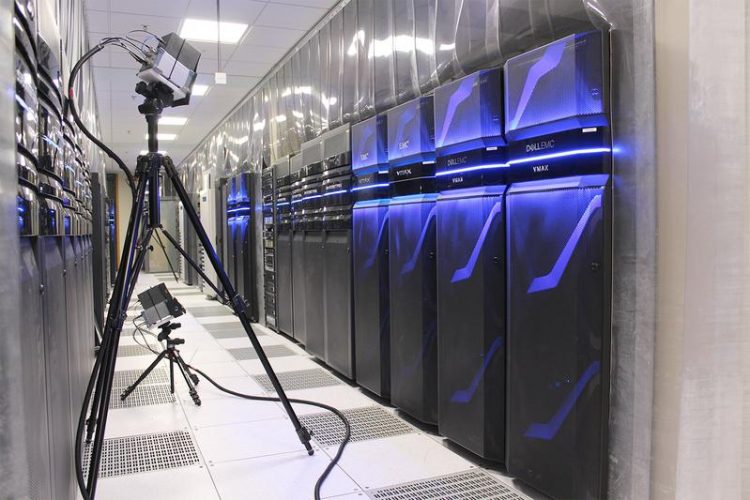New DFG Research Group "Metrology for THz Communications"

Setup for performing propagation measurements in a data center with the Channel Sounder available at the TU Braunschweig. Institute for Communications Technology/TU Braunschweig
At the heart of “Metrology for THz Communications” is communication technology for the largely untouched terahertz frequency range (THz). Terabit per second could be transmitted at this frequency range in the future.
However, compared totoday's communication technology enormous challenges have to be overcome. The DFG is supporting this research with a total of 2.6 million euros over three years.
Professor Thomas Kürner from the Institute for Communications Technology at the TU Braunschweig, designated speaker of the DFG research group:
“The possibility of performing and evaluating precise measurements in the demanding frequency range above 300 GHz with very high bandwidths at the same time is an essential basis for the future development and implementation of THz communication systems. With the research group Meteracom we will be able to make an important contribution to the solution of these challenges”.
An essential aspect to achieve the high data rates are the 10s of GHz bandwidths available above 300 GHz. Scientists from TU Braunschweig and the Physikalisch-Technische Bundesanstalt (PTB), the National Metrology Institute of Germany, have been working on THz communication for more than ten years and have also played a leading role in the development of the world's first wireless communication standard for 300 GHz.
The Meteracom research group is doing research on metrology for future THz communication systems and aims, among other things, to design measurement methods that help to predict the performance of THz communication in real environments.
Within the ten sub-projects of the new DFG research group, all aspects of measurement technology are considered, comprising the traceability of measurements to reference standards, the methods for characterizing the measurement systems themselves, the specific measurement methods for characterizing the components of the communication systems and the transmission channel as well as the measurements required for the later operation of the THz-communication systems.
Besides Professor Kürner, two other researchers from TU Braunschweig (Professor Admela Jukan from the Institute of Computer and Network Engineering and Professor Thomas Schneider from the Institute of High Frequency Technology) as well as Dr. Thomas Kleine-Ostmann from PTB are involved.
The competence and the technical equipment available at the Braunschweig location are supplemented by five further researchers from Paderborn, Marburg, Stuttgart, Lübeck and Ilmenau as well as a Mercator Fellow from the National Physics Laboratory, the British counterpart to PTB.
“Metrology for THz Communications” is one of ten new research groups set up by the DFG alongside two clinical and one research group. The new collaborations will receive a total of around 47 million euros. The maximum funding period for these research groups is two three-year periods.
Research groups enable scientists to devote themselves to current and urgent questions in their fields and to establish innovative working directions. In total, the DFG currently funds 153 research groups, eleven clinical research groups and 13 research groups.
Prof. Dr.-Ing. Thomas Kürner
Technische Universität Braunschweig
Institute for Communications Technology
Schleinitzstraße 22
38106 Braunschweig
Germany
E-Mail: kuerner@ifn.ing.tu-bs.de
Phone: +49 531 391-2416
www.ifn.ing.tu-bs.de/ifn
Media Contact
More Information:
http://www.tu-braunschweig.de/All latest news from the category: Information Technology
Here you can find a summary of innovations in the fields of information and data processing and up-to-date developments on IT equipment and hardware.
This area covers topics such as IT services, IT architectures, IT management and telecommunications.
Newest articles

First-of-its-kind study uses remote sensing to monitor plastic debris in rivers and lakes
Remote sensing creates a cost-effective solution to monitoring plastic pollution. A first-of-its-kind study from researchers at the University of Minnesota Twin Cities shows how remote sensing can help monitor and…

Laser-based artificial neuron mimics nerve cell functions at lightning speed
With a processing speed a billion times faster than nature, chip-based laser neuron could help advance AI tasks such as pattern recognition and sequence prediction. Researchers have developed a laser-based…

Optimising the processing of plastic waste
Just one look in the yellow bin reveals a colourful jumble of different types of plastic. However, the purer and more uniform plastic waste is, the easier it is to…



